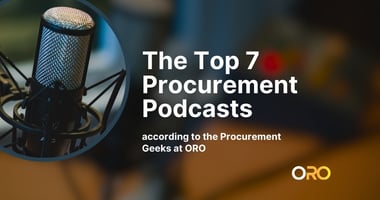Procurement stands at an inflection point. Across large enterprises, the function is under more...
Why Agentic AI Is the Next Frontier in Procurement Transformation

In recent years, procurement has undergone dramatic change, shifting from reactive back-office operations to proactive business enablers. Now, with the rise of agentic AI, the function is on the cusp of its most transformative leap yet. Intelligent and autonomous agents don’t just automate tasks. They learn, adapt, and collaborate to drive strategic value across procurement’s full lifecycle.
What Is Agentic AI—and Why It Matters
Unlike rule-based bots or traditional automation, agentic AI leverages large language models (LLMs) to make informed decisions, act independently, and evolve through experience. These agents can orchestrate sourcing, analyze supplier risk, manage contracts, and more, all with minimal human intervention.
According to a 2025 ORO survey, 90% of procurement leaders are already adopting or considering agentic AI this year, and 45% believe these agents will handle at least 25% of procurement activities by year’s end. That level of growth reflects a broader market trend: Gartner predicts one-third of enterprise software will incorporate agentic AI by 2028, up from less than 1% in 2024.
Practical Use Cases in Procurement
Agentic AI has applications across the full source-to-pay (S2P) spectrum. It can autonomously manage sourcing events and supplier negotiations, handle invoice exceptions, monitor compliance, and proactively flag risks. It also supports strategic planning through demand forecasting and budget-aware planning, while enabling responsive helpdesk functions and crisis response.
One standout use case is real-time supplier risk monitoring. Rather than relying on periodic audits, agents continuously scan structured and unstructured data to detect early signs of financial instability, geopolitical risk, or compliance red flags. They assign dynamic risk scores and can even recommend alternative suppliers when thresholds are breached. The result is reduced downtime and bolstered supply chain resilience.

Agentic Orchestration: The Future of Collaboration
As individual agents prove their value, the next evolution is orchestrating them into multi-agent ecosystems. Within ORO’s orchestration platform, each agent plays a role — whether it’s managing intake, reviewing contracts, or conducting risk assessments. These agents communicate and pass tasks to one another, replicating the collaborative model of human teams, but with far greater speed and precision.
This orchestration unlocks exponential value, allowing procurement to scale across regions, categories, and stakeholder groups without adding headcount or complexity.
Preparing for What Comes Next
While agentic AI is here today, scaling it requires solid data infrastructure and organizational readiness. Procurement teams must evolve, shifting from task execution to strategic oversight.
This transformation demands new skills. Training in prompt engineering, ethical AI, agent supervision, and human-AI collaboration will be essential. Leaders must invest, not only in technology, but also in people in order to bridge the skills gap and align teams around new ways of working.
To help organizations gauge readiness, we have created a self-assessment scoring maturity from Novice to Leader based on ten critical areas, from infrastructure and use case clarity to governance and employee trust.
Agentic AI represents a profound shift in how procurement operates. It offers a future where decisions are faster, smarter, and more consistent—where risk is managed in real time and strategy is no longer stalled by manual processes. As organizations adopt and scale these capabilities, procurement will become not just more efficient, more intelligent, and more influential.






